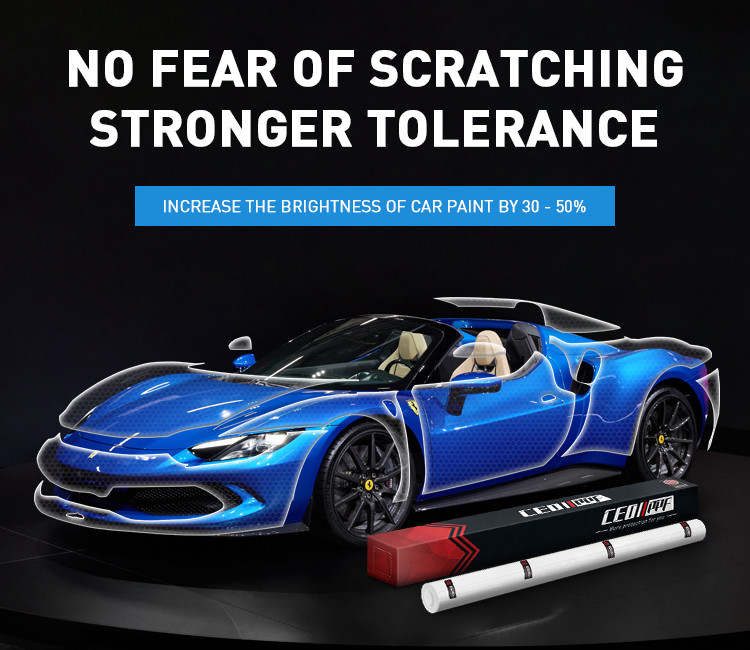The protection time provided by PPF (Paint Protection Film) varies
depending on multiple factors.
Generally speaking, if high-quality PPF products are used and
proper installation and maintenance are carried out, it can provide
protection for 5 to 10 years or even longer.
The following are some factors that affect the protection time of
PPF:
I. PPF product quality
Material characteristics: High-quality PPF usually uses advanced
polymer materials and has better scratch resistance, ultraviolet
resistance, and chemical corrosion resistance. These materials can
maintain their performance for a long time, thereby providing more
durable protection. For example, some top-notch PPF products use
thermoplastic polyurethane (TPU) materials, which have excellent
flexibility and self-healing ability and can effectively resist
various damages in daily use.
Thickness: Thicker PPF usually has better wear resistance and
impact resistance and can provide longer protection. Generally
speaking, PPF with a thickness between 7 and 10 mils can provide
better protection effects, and thicker products may provide a
longer service life.
II. Installation quality
Professional installation: Installation by trained professionals
can ensure that the PPF is completely adhered to the car paint
surface without problems such as bubbles, wrinkles, or lifted
edges. Correct installation can maximize the protection performance
of PPF and extend its service life. If installed improperly, PPF
may experience problems such as falling off, blistering, or damage
in a short time, thereby reducing its protection effect.
Cleaning and preparation: Thorough cleaning and preparation of the
car paint surface before installing PPF is very important. This
includes removing dirt, grease, wax, and other impurities to ensure
that the PPF can be firmly attached to the car paint. If the car
paint surface is not adequately cleaned and prepared, the PPF may
not be able to closely bond with the car paint, thereby affecting
its protection effect and service life.
III. Usage environment and maintenance
Climatic conditions: Different climatic conditions also have
different impacts on PPF. In hot and humid climates, PPF may face
more challenges such as high temperature, high humidity, and
ultraviolet radiation. These factors may accelerate the aging and
degradation of PPF, thereby shortening its protection time. In
contrast, in mild climatic conditions, PPF may be more durable.
Daily maintenance: Correct daily maintenance can extend the service
life of PPF. This includes regularly washing the vehicle, avoiding
the use of irritating cleaners and tools, and avoiding long-term
parking in high temperatures. In addition, timely handling of
scratches and stains on the surface of PPF can also maintain its
appearance and performance. If PPF is properly maintained, it can
remain in good condition for a long time and provide continuous
protection.
In conclusion, the protection time provided by PPF depends on
multiple factors. Choosing high-quality products, installing them
by professionals, and carrying out correct daily maintenance can
maximize the protection time of PPF and provide long-term
protection for your vehicle.








